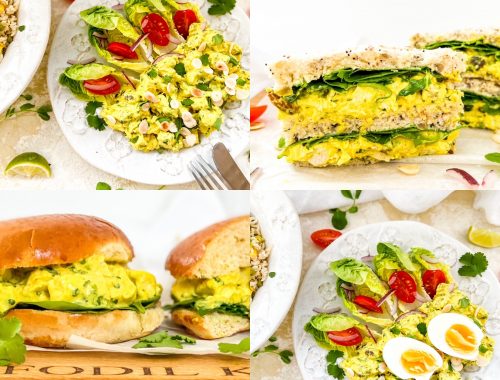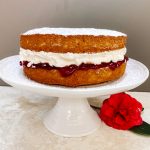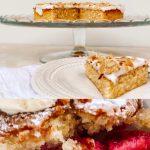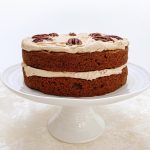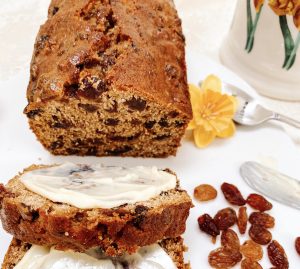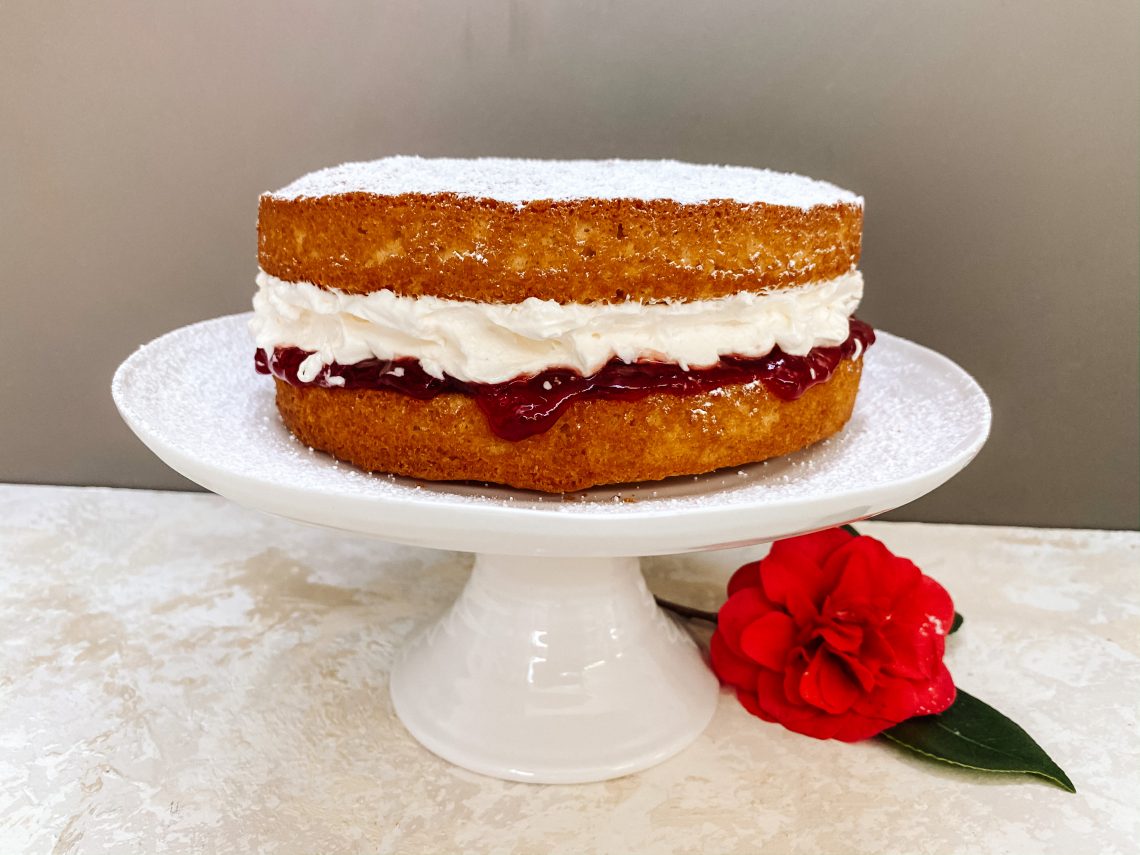
Victoria Sponge Cake with Fresh Cream and Strawberry Jam
Light and fluffy buttery sponge cake sandwiched with lashings of whipped fresh cream and strawberry jam. A classic English tea time treat served with a hot cup of tea. Think picnics in green meadows, long lazy cricket matches or Wimbledon tennis, bone China teacups and a thick slice of cake. Based on my Classic Sponge Cake/Pudding – Core Recipe, this is a classic and traditional recipe which is as relevant and popular today as it was over 150 years ago!
Filled with fresh cream, this cake needs to be stored in the fridge but is best eaten at room temperature and on the day it is made. Which I see as a good excuse for a very generous wedge! However, if you prefer you can serve it just with jam and no cream, in which case there is no need to store it in the fridge.
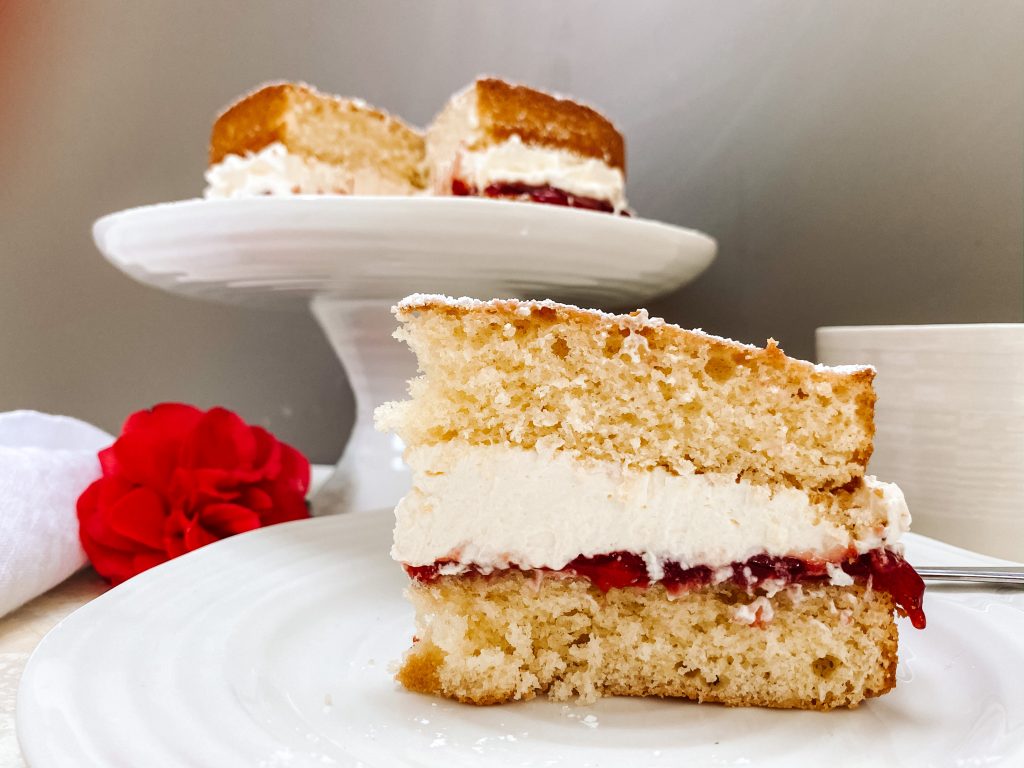
This recipe includes a generous amount of fresh cream and jam. If I’m going to have my cake and eat it, then I’d rather not scrimp! No one’s pretending it is a health food, so eat it as you like it – may be just restrict how often you make it because I promise, you will not be able to resist. My husband (he of the ‘I don’t like sweet things’ persuasion) adores this cake and absolutely cannot be trusted not to over-indulge. Similarly with chocolate eclairs (recipe coming soon!) – I think he’s trying to persuade himself rather than anyone else!
Records of sponge cakes go back to the early 17th century when cakes were leavened by the use of eggs. In the mid 19th century, during the reign of Queen Victoria, an English food manufacturer, Alfred Bird, created baking powder and this allowed for the use of butter in the cakes. This resulted in the cake we know today as Victoria sponge.
Traditionally you would weigh the egg or eggs and use the same weight in sugar, butter and flour as well as adding a little salt and some baking powder. You can of course calculate your cake mixture like this, but for ease I have given quantities based on the average weight of a large egg and hence also given guidance on the salt and baking powder needed.
How to make Victoria Sponge Cake with Fresh Cream and Strawberry Jam
This recipe is delicious in its simplicity:
- make the Classic Sponge Cake/Pudding – Core Recipe using 2 eggs, no additions, just as is (For more guidance on making this sponge, please refer back to this Core recipe here.)
- whip some cream
- sandwich the cakes with the cream and some strawberry or raspberry jam
- sieve some icing sugar over the top
First make the cake:
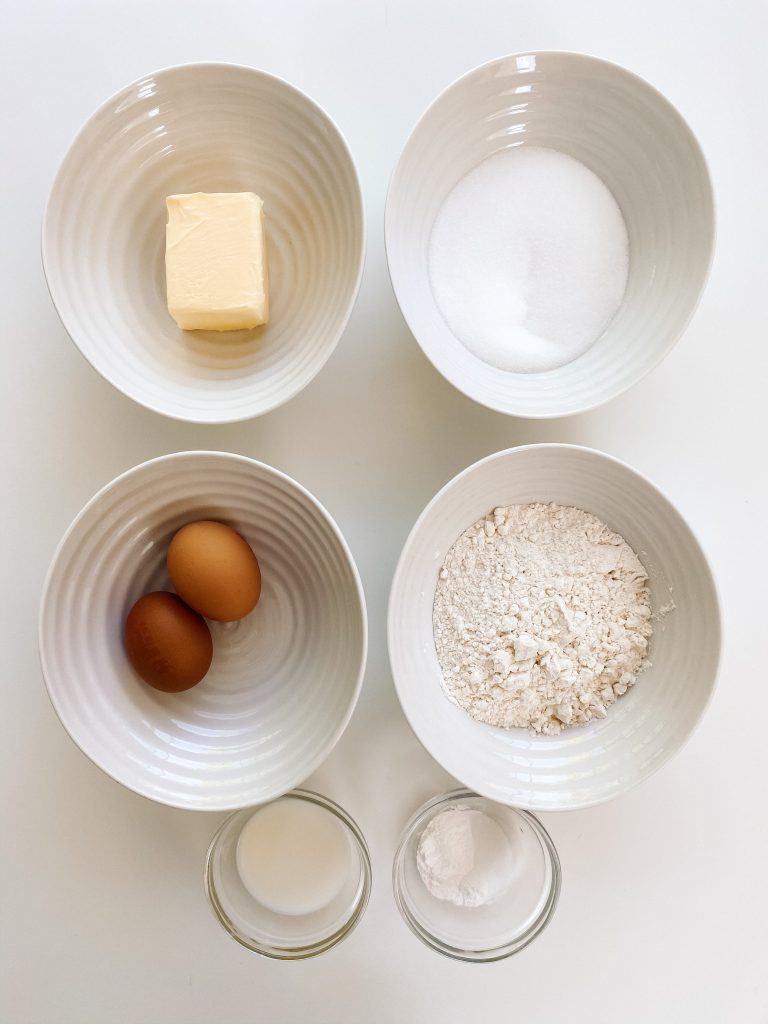
1 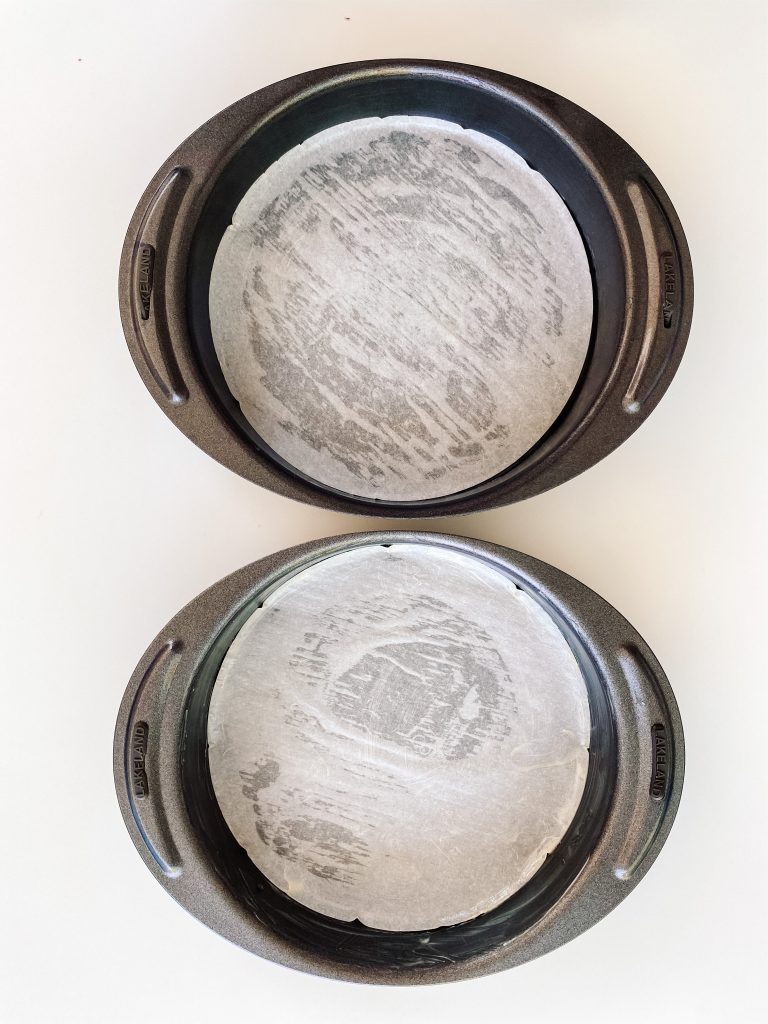
3 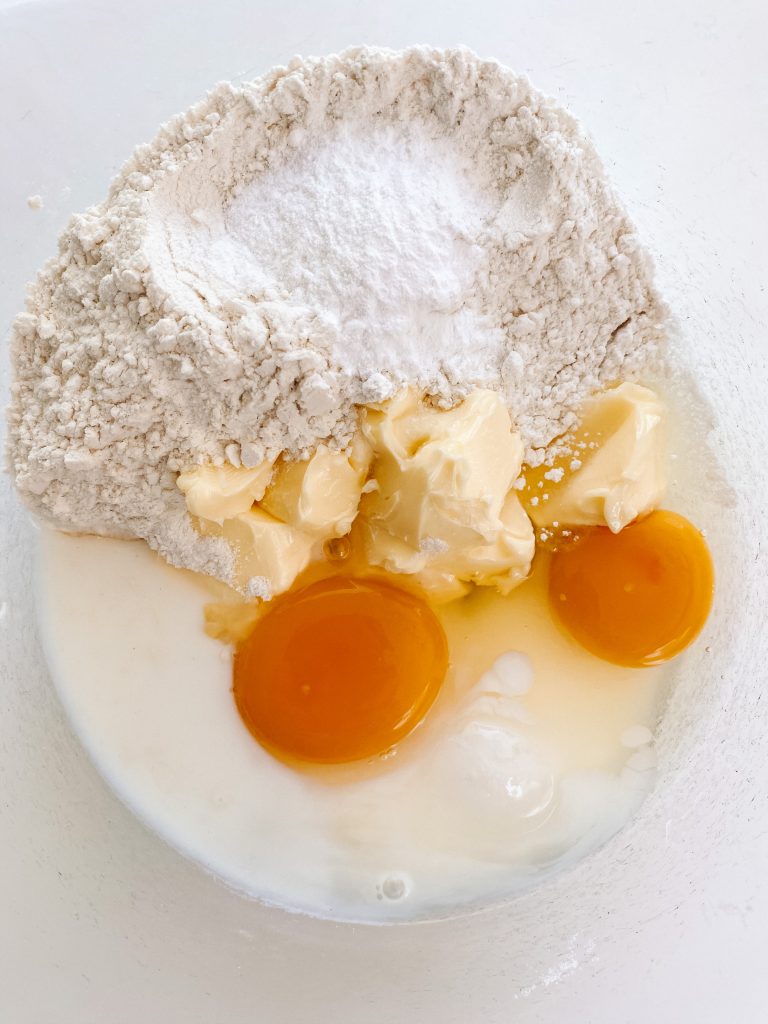
2 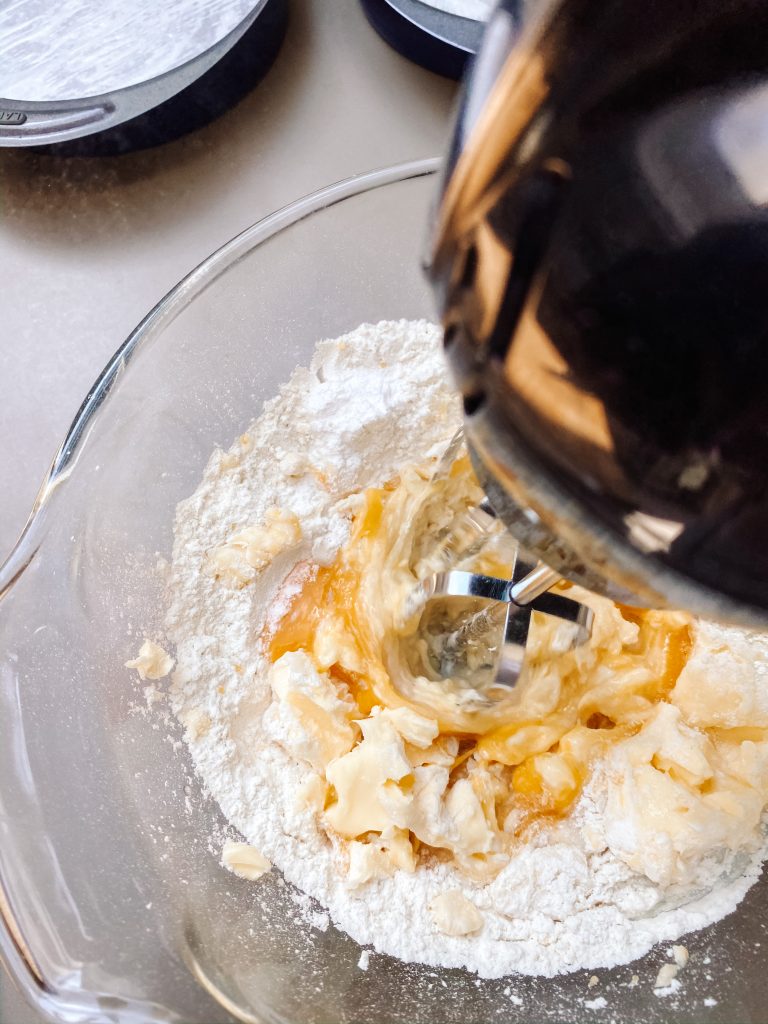
4 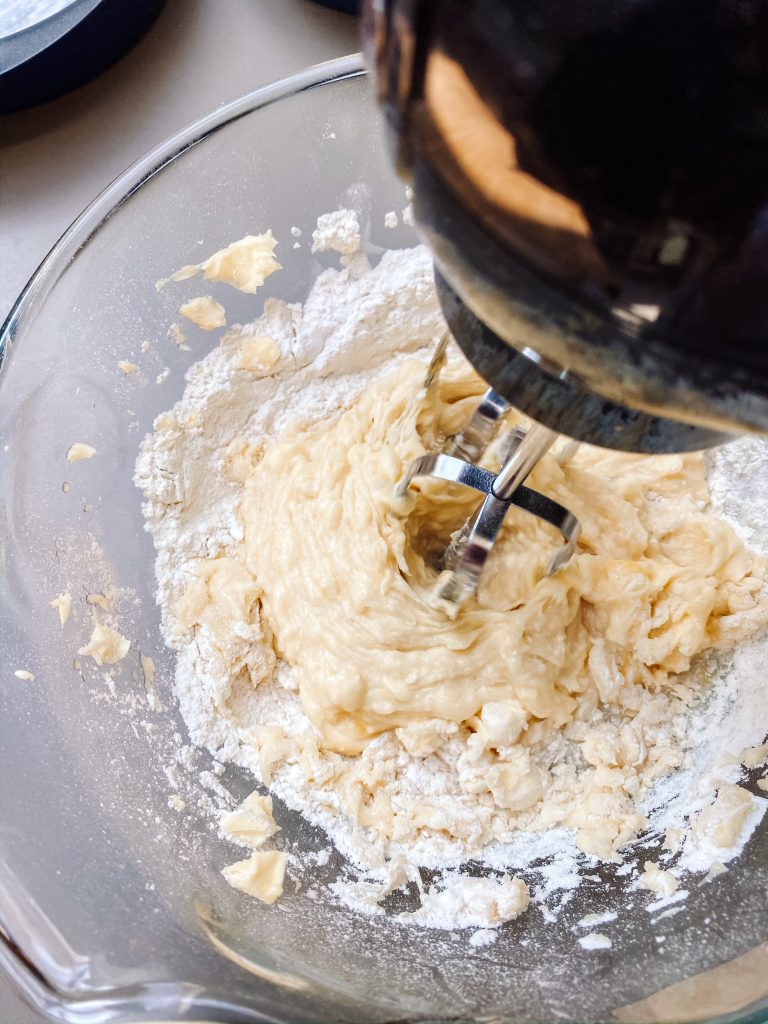
5 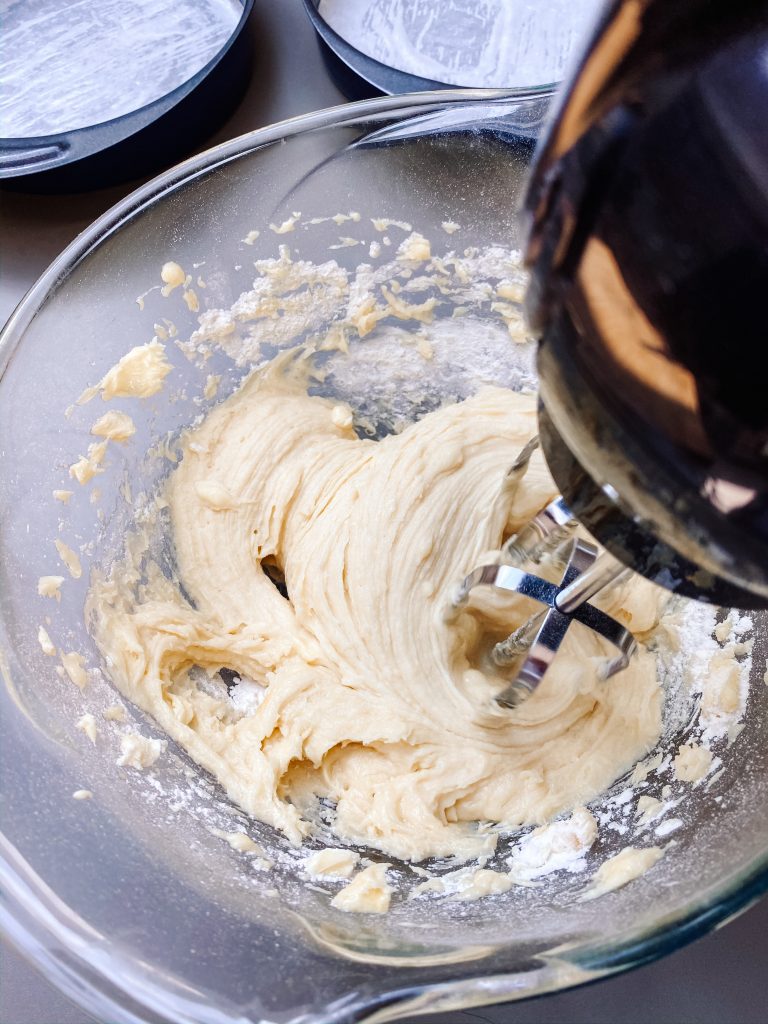
6 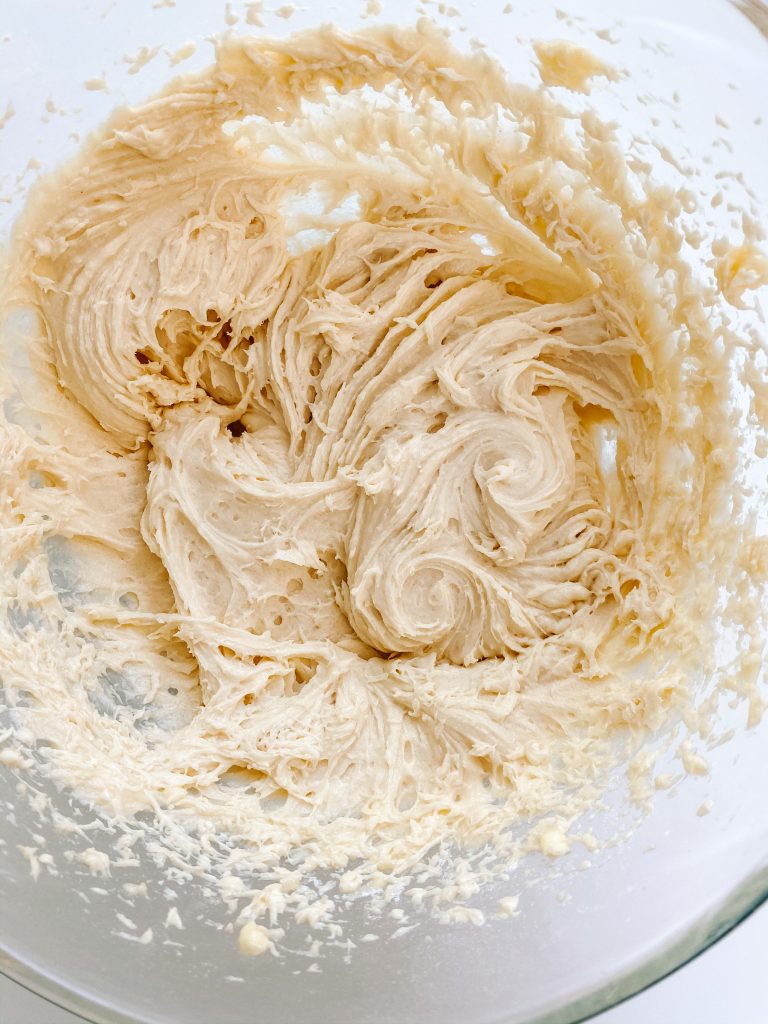
7 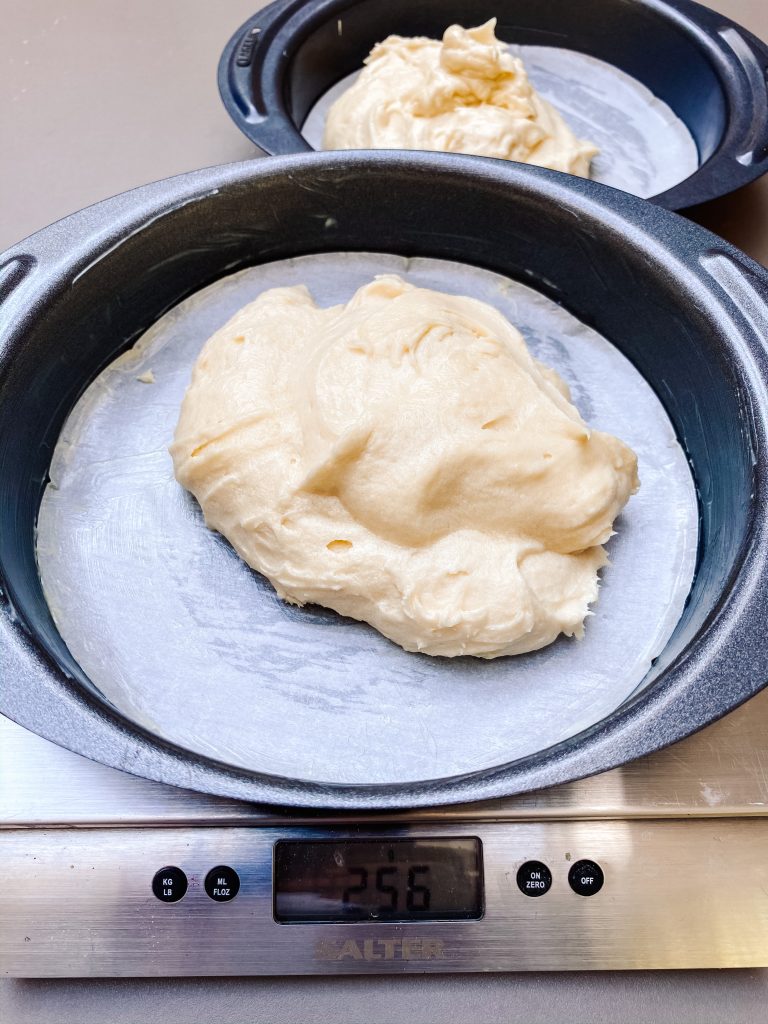
8 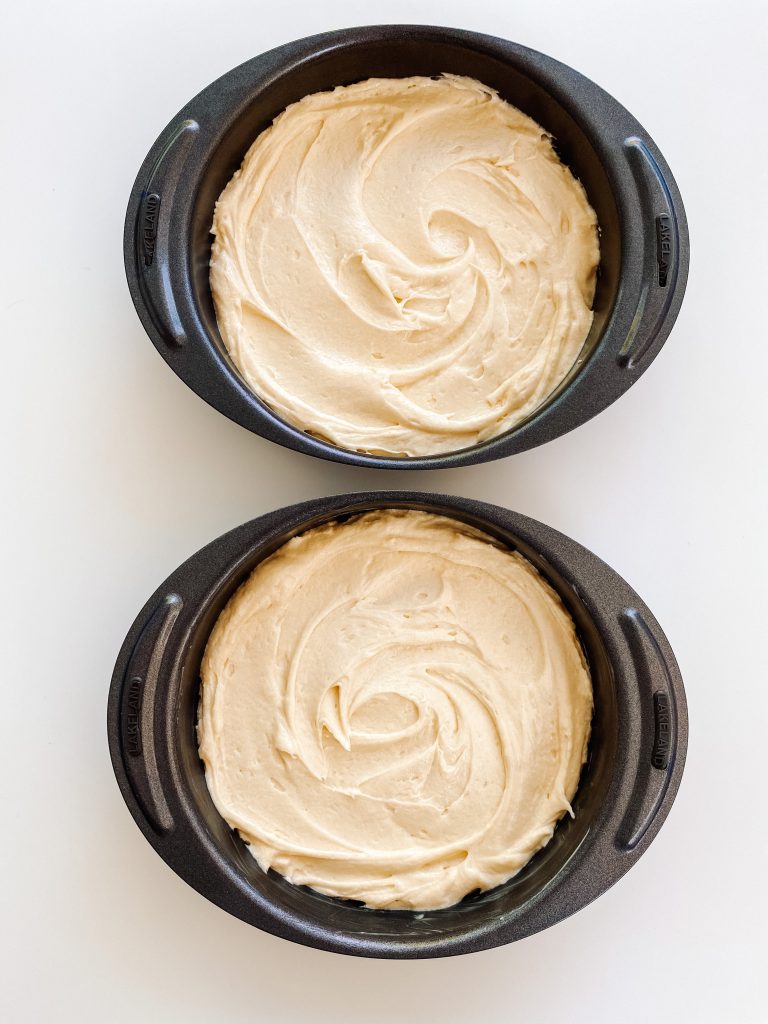
9
Fill with fresh cream and strawberry jam and finish with some sieved icing sugar
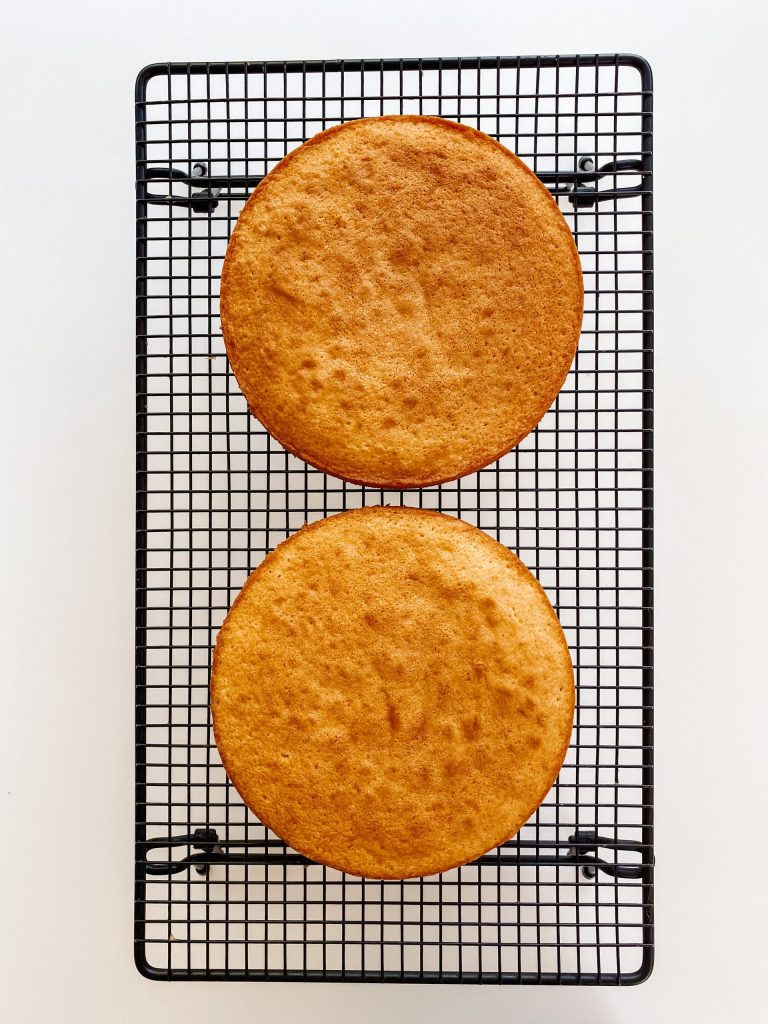
10 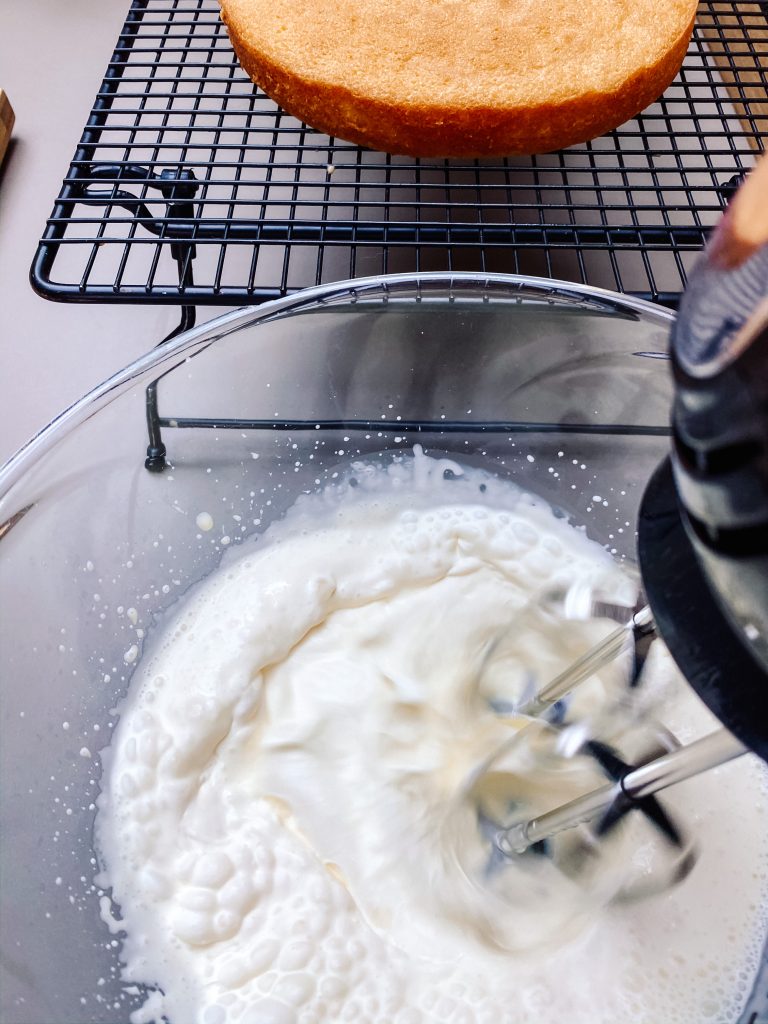
11 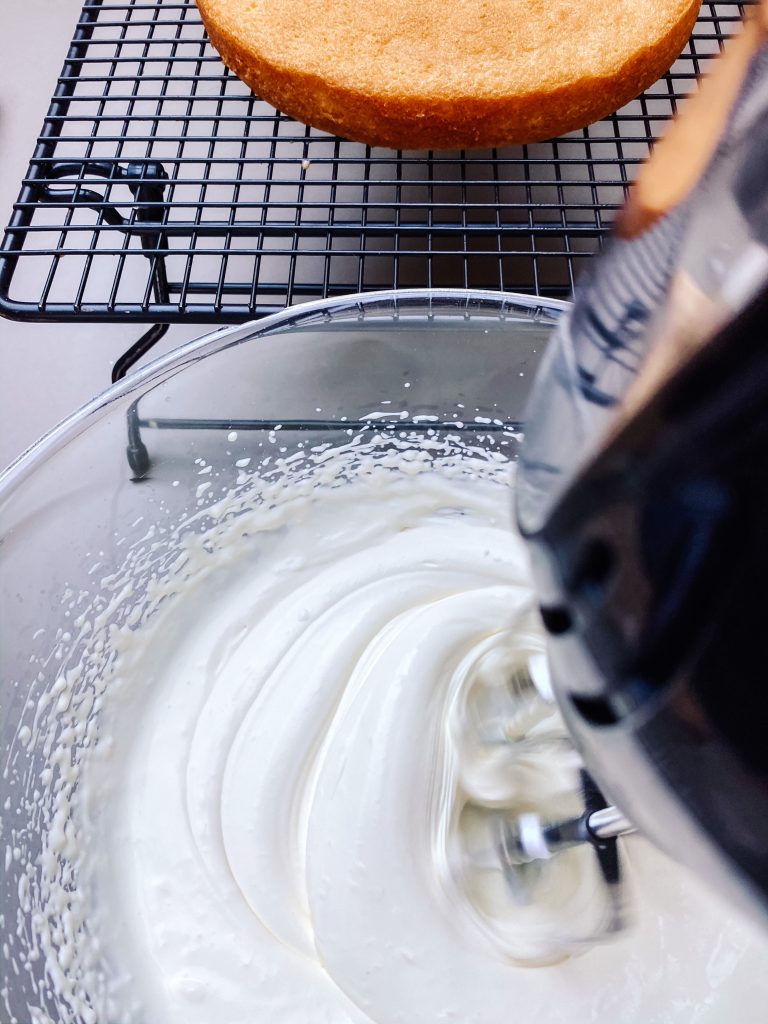
12 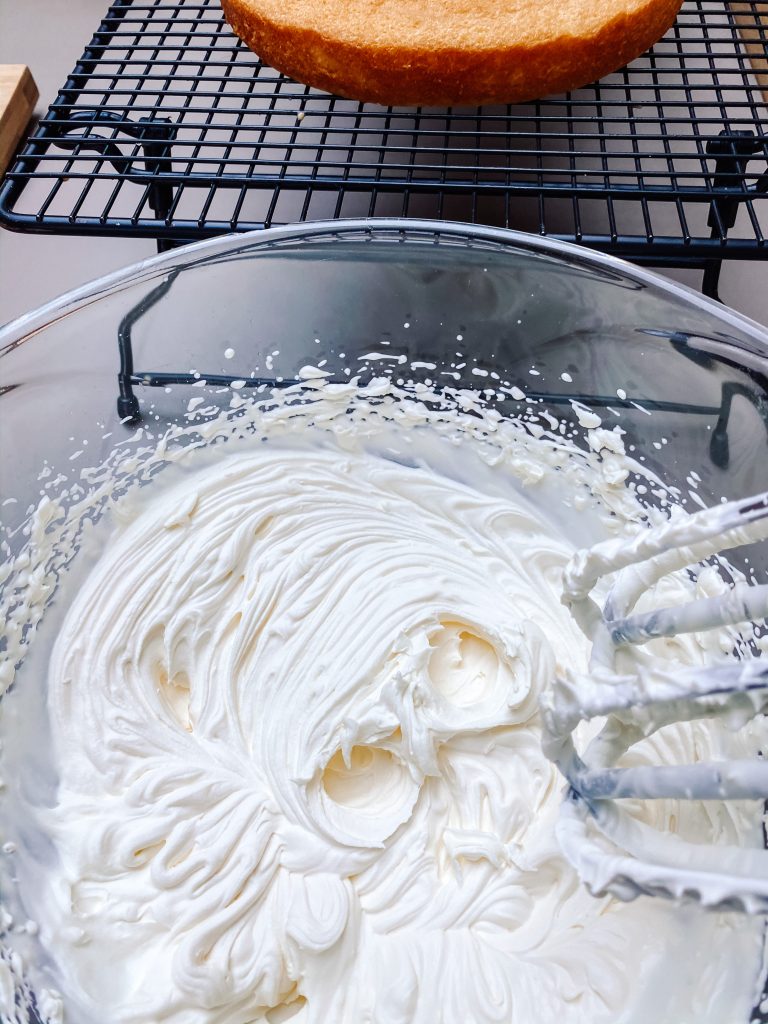
13 
14 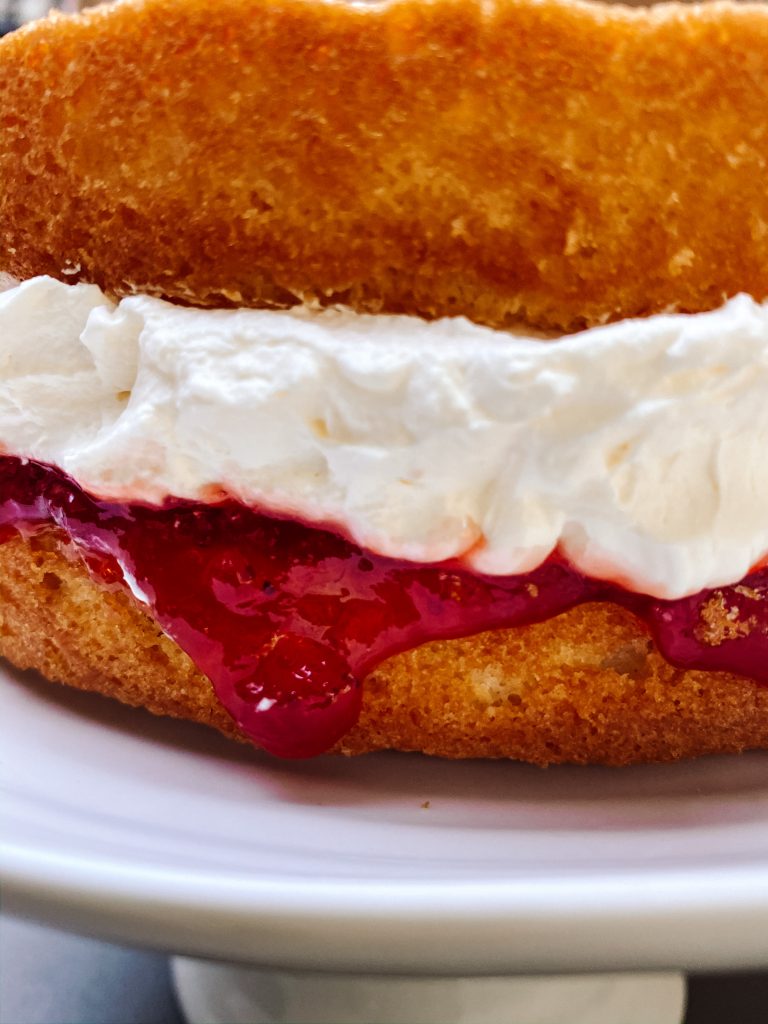
15
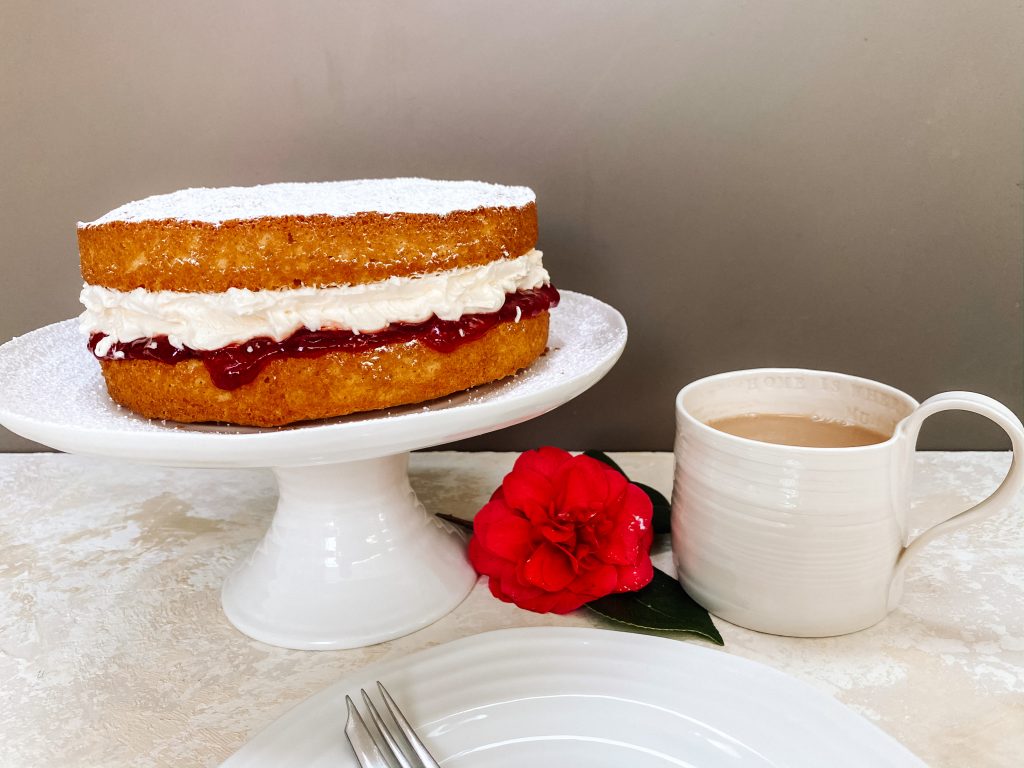
Made this recipe?
If you make this recipe, do please tag me on instagram @daffodilkitchen. You could also leave a comment in the box directly below the recipe.
Victorian Sponge Cake with Fresh Cream and Strawberry Jam
Light and fluffy buttery sponge cake sandwiched with lashings of whipped fresh cream and strawberry jam. A classic English tea time treat served with a hot cup of tea.
Ingredients
For the cake:
- 130g unsalted butter, at room temperature
- 130g caster sugar
- 2 large eggs
- 130g plain/all-purpose flour
- 1¼ teaspoons baking powder
- ¼ teaspoon fine salt
- 1 tablespoon milk
For the filling and topping:
- 250g fresh double/whipping cream
- 125g strawberry jam
- 1 tablespoon icing sugar
Instructions
For the cake:
-
Collect together your equipment (see Recipe Notes below) and ingredients.
-
Preheat oven to Fan Oven 160°C/180°C/350°F/Gas 4
-
Grease and line your cake tins or insert cake tin liners.
-
Ensure the butter is at room temperature and soft enough to beat. If not soften it slightly in the microwave. (Be very careful not to melt it though – just do 5 seconds at a time if you are unsure.)
-
Add all the remaining ingredients to the butter and whisk thoroughly with an electric whisk until just combined. This should take around 45 seconds to 1 minute, and no more.
NB to sieve the flour, see Recipe Notes
-
Transfer to the prepared cake tins (see Recipe Notes) and cook in the centre of the oven for 18 – 22 minutes or until the sponge is cooked. It is cooked when:
– the centre feels springy when lightly touched with your finger and no imprint remains
– a toothpick inserted into the centre of the cake comes out clean
– the cake is beginning to come away from the sides of the tin.
-
Take out of the oven and leave for 5 minutes. Remove the cakes from the tins onto a cooling rack. Leave to cool.
For the filling and topping:
-
Weigh the cream directly into a mixing bowl and whip with an electric whisk until it reaches soft peaks. It needs to be thick enough to spread and hold its shape but be careful not to overwhip or it will become grainy.
-
Turn one of the cakes up side down and place in the centre of a serving plate so the flat side faces up. Spread with the strawberry jam.
-
Top with the whipped cream, gently smoothing it over the jam.
-
Place the second cake on top, flat side down.
-
Tip the icing sugar into a sieve and shake evenly over the top of the cake.
-
Serve at room temperature with hot tea. Store in the fridge.
Recipe Notes
Equipment
- 2 x 7inch round cake tins, greased and lined with baking parchment or a cake tin liner
- kitchen scales and measuring spoons
- mixing bowl
- electric whisk
- baking dish/cake tins
- sieve
- cooling rack
Sieve the flour
- I don’t always do this but it does add air into the cake to help make it lighter. The quickest way to do this is to:
- Add the sugar, eggs and milk to the butter. Put the mixing bowl on the scales, balance the sieve on the bowl and zero the scales.
- Weigh the flour directly onto the sieve and add the baking powder and salt. Lift the sieve above the bowl and shake the sieve. You may need to use a spoon to press any remaining lumps of flour through.
Balancing the cake tins:
It is important that both tins have as equal amount of batter as possible. You can do it by eye but this is a really simple way to be accurate. To do this, I:
- put a cake tin on the scales and zero the scales
- add half the batter – it should weigh between 255g – 260g. Take off the scales
- place the second empty tin on the scales and check it has gone back to zero
- add the remaining batter and check it is the same weight. If not adjust.
For a larger cake, use 3 eggs and 2 x 8 inch cake tins:
- 195g unsalted butter
- 195g caster sugar
- 3 large eggs
- 195g plain/all-purpose flour
- 1¾ plus ⅛ teaspoon baking powder
- ¼ plus ⅛ teaspoon fine salt
- 1½ tablespoons milk

Greek Salad
You May Also Like
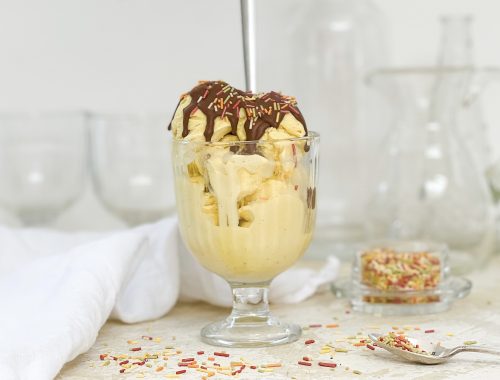
Magic Shell Ice Cream Topping
18th July 2022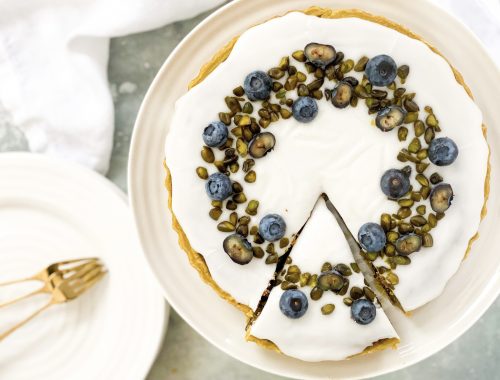
Blueberry and Pistachio Bakewell Tart
7th July 2021